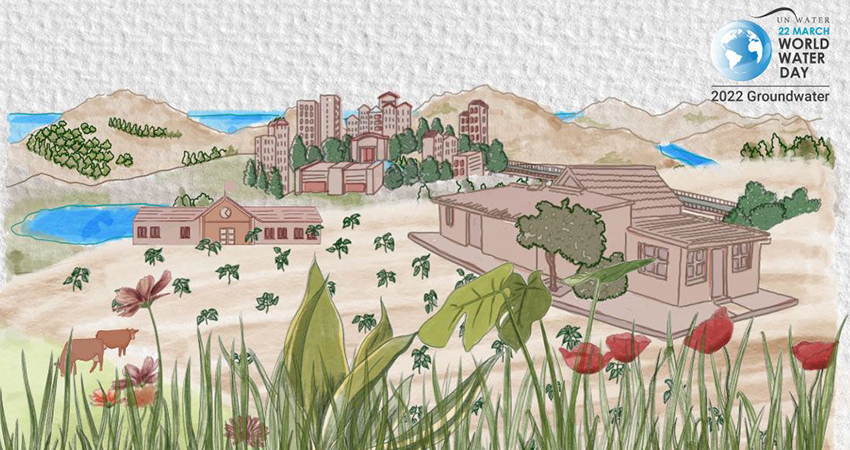Groundwater protagonist of World Water Day 2022

-
 Esther Rasenberg
Esther Rasenberg
Share article:
Groundwater is invisible, but its impact is visible everywhere. Almost all of the liquid freshwater in the world is groundwater. As climate change gets worse, groundwater will become more and more critical. That is why we need to work together to sustainably manage this precious resource, declares UN Water. Groundwater is the protagonist of World Water Day 2022.
Making the invisible visible is the slogan of the annual event that takes place the 22nd of March. World Water Day is organized every year on the 22th of March by UN Water. During this day globally many events are taking place to create awareness of the theme that is always related to water. Last year the theme was water2me about the personal meaning of water, followed this year by groundwater. ‘Groundwater may be out of sight, but it must not be out of mind’, states UN Water on their website.
Over-abstraction and pollution
According to the UN human activities are causing over-use and pollution. Groundwater is being over-used in many areas, where more water is abstracted from aquifers than is recharged by rain and snow. Continuous over-use leads eventually to depletion of the resource. Groundwater is also often polluted in many areas and remediation is often a long and difficult process. This increases the costs of processing groundwater, and sometimes it cannot be used due to the pollution. Also according to GeoEra innovative concepts in groundwater management is a growing need to manage the resource better.
Irrigation
According to the global inventory ‘Groundwater use for irrigation’ of the Hydrology and Earth System Sciences about 40 per cent of all the water used for irrigation comes from aquifers. Especially in water-scarce countries, the provision of cheap energy for pumping groundwater for irrigated agriculture can lead to groundwater depletion and declining water quality. Furthermore, the use of fertilizers and pesticides in agriculture is a serious threat to groundwater quality. Nitrate is the most common contaminant of groundwater resources worldwide. In the European Union more than 20 per cent of the groundwater bodies exceeds EU standards on good water quality due to agricultural pollution.
A resource without borders
Most of the world’s large aquifers cross international borders. Some 468 transboundary aquifers have been identified worldwide, so the vast majority of countries share groundwater resources. At the moment, only a handful of transboundary aquifers are governed by an international agreement. With the increasing use of groundwater resources worldwide, the need for stronger specific cooperation on transboundary groundwaters has become ever more evident and urgent. A good example of improved international governance is the Strategic Action Programme for the Dinaric aquifer system in Southeast Europe.
Sustainable Development Goals
Good groundwater management is needed to achieve most of the Sustainable Development Goals (SDGs) of Agenda 2030. Fifty-three of the SDG’s 169 targets have a link to groundwater. For instance, SDG target 2.4 on sustainable food production systems and resilient agricultural practices relies on the availability of groundwater. Good groundwater management is needed to achieve SDG target 6.6 to protect and restore water-related ecosystems, and SDG target 15.1 on the conservation of freshwater ecosystems and their services.
Define actions
The UN-Water Summit on Groundwater in December 2022 aims to bring attention to groundwater at the highest international level. The Summit will use the UN World Water Development Report 2022 as a baseline and the SDG 6 Global Acceleration Framework to define actions towards more responsible and sustainable use and protection of this vital natural resource. The Summit will unify the statements from all major water-related events in 2021 and 2022 into one comprehensive groundwater message for the UN 2023 Water Conference.


















